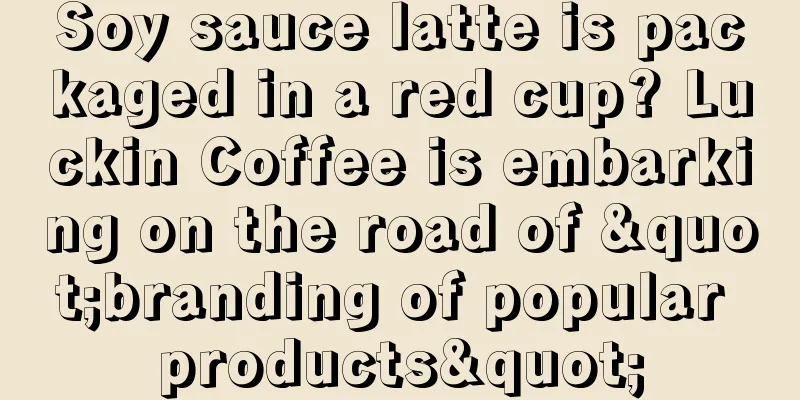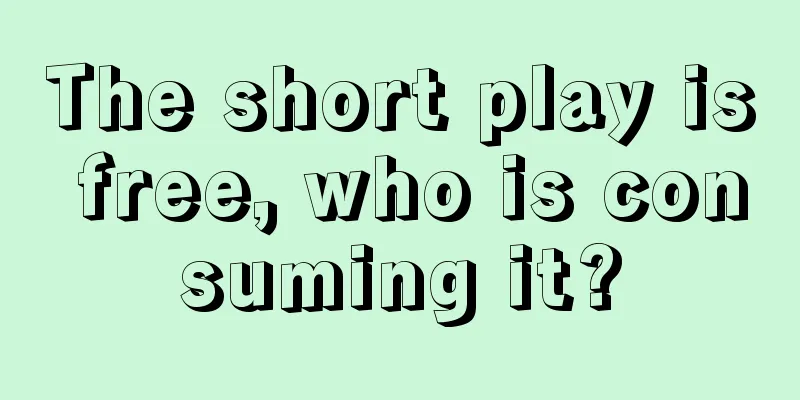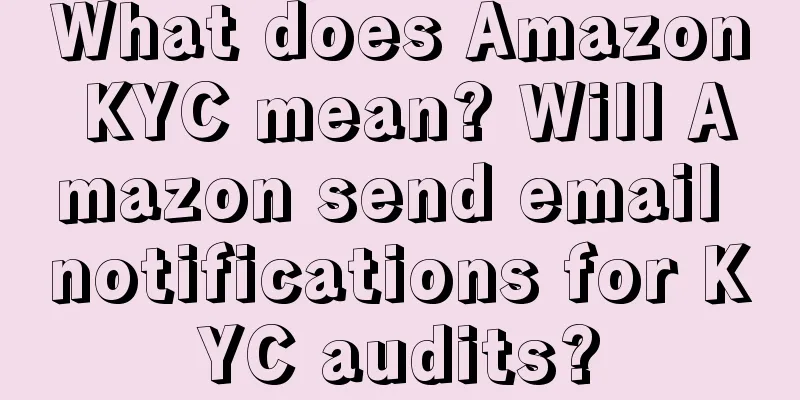Want Want becomes "bigger" and then "smaller" little by little... What marketing tricks are hidden behind the packaging?

In the earliest days, product packaging was mainly used to help transport and store products. With the development of the times and the market, today's product packaging is more like a mobile billboard and a private domain for marketing . Nowadays, all major brands hope to attract consumers through unique packaging designs. The most common way is to change the regular packaging size. For example, the milk tea brand Yidiandian took the lead in launching mini packaging, leading the industry's trend of small packaging. Or Wangzai, which takes big as beauty, has entered the "bigger" market with great fanfare. Both changes have brought good market response. So, what kind of marketing thinking is behind these two completely different design ideas ? 01 Becoming smaller is to cater to consumers and improve salesIn the past two years, there has been a mini craze in everything from snacks and beverages to home appliances and cars. Judging from the results, the "smaller" product reflects an increase in sales. For example, Coca-Cola launched 200ml mini bottles of Coke in 2018. In terms of price, the unit price per milliliter of small-packaged cola is actually more expensive than 500ml of cola, but its sales are very ideal. According to the "2019 China Brand Footprint Report" released by Kantar, Coca-Cola has become the brand with the fastest growth in consumer reach, and a large part of the reason behind this is the growth of Coca-Cola's small-package products. In addition to Coke, Yuanqi Forest, a "rising star" in the carbonated beverage industry, also launched 5 mini cans of sparkling water in different flavors in 2020. Regarding the birth of small-package products, Yuanqi Forest officials said on Weibo: Many consumers have reported to us that they cannot finish 480ml of Yuanqi Forest in one go, so we have mini cans of sparkling water. Why are consumers more interested in small packages? The logic behind this is closely related to the overall economic environment and changes in consumers' life concepts. If you observe carefully, you will find that small-packaged products are more popular among young people , while older people tend to buy large-packaged products with better cost-effectiveness. This may be because older users are still continuing the old "family consumption", that is, the amount of goods needs to consider three or more people. But for young people, the only person they consider is probably themselves. According to statistics from the Ministry of Civil Affairs, as of 2018, the number of single adults in China reached 240 million , of which 92 million were single and living alone. The rise of the single group has awakened the consumption needs of one person, which naturally gave rise to a single-person consumption economy. For example, the demand scenario of "buying rice". Not to mention how troublesome it is for one person to carry a bag of rice weighing dozens of kilograms home. According to the eating habits of most young people who "love to order takeout" and "only eat one meal at home a day at most", the traditional large bag of rice may be so rotten that they cannot be eaten up. Because of this, the sales of small packaged rice are far better than those of large packaged rice. The most typical example is that Hema initially promoted its own brand and sold 5 kilograms of rice, but unfortunately the sales volume was mediocre. When the company changed the packaging of rice from bags to bottles, sales continued to rise, with a month-on-month growth rate of more than 57%. The 300-gram bottled rice even has a series that does not require washing. Just pour a bottle of rice and two bottles of water, and dinner is ready. Such small-sized rice can be consumed in one go, which is convenient and fresh, and is naturally sought after by many young consumers. Hou Yi, CEO of Hema, once shared a set of data in CCTV's "Dialogue" column, "Hema rice, a small package of 1 jin sells for 9.9 yuan/jin, and a large package of 10 jin sells for 7.8 yuan/jin. The sales volume of small packages is three times that of large packages." Not only that, the "single economy" has also successfully brought popularity to products such as mini rice cookers and self-heating pots. In terms of services, choosing a single karaoke room, traveling alone, or afternoon tea for one person are all innovative "one-person" consumption methods. 02 Getting bigger is to attract consumers and better marketingIf "becoming smaller" is for better sales, then "becoming bigger" is for better marketing. Chinese consumers have a natural penchant for "big". From mobile phones, televisions to cars, all of them prove that Chinese people are obsessed with "big". For brands, launching larger packaging is a smart marketing strategy. Large-capacity and super-sized packaging can easily arouse consumers' curiosity and give them a sense of freshness. This marketing method can attract attention, stimulate purchasing desire, and guide consumers to pay attention to purchasing. According to Nielsen's "Top Ten Trends in China's Consumer Market in 2019" survey, product packaging will directly affect consumers' decisions. Among them, 64% of consumers will decide whether to try new products based on the packaging, and the consumption stimulated by new packaging generates a return on investment that is 50 times that of advertising investment. Take Want Want as an example. In 2019, Want Want posted a photo of the PLUS version of Want Want buns on its Weibo, sparking heated discussions among netizens. Although people eventually discovered that this was not a real "big steamed bun", but a peripheral toy that looked like a steamed bun. But this does not prevent this wave of marketing from earning Want Want huge popularity. It is reported that after the photo of "Wangzai Big Bun" was released, it quickly became one of the top three hot searches on Weibo. Data shows that the reading volume of this topic has reached 550 million, and about 100,000 people have participated in this discussion. Judging from the communication traffic data alone, Want Want’s promotional purpose has been achieved. In addition to Want Want, Three Squirrels, Bestore, and Be & Cheery have all launched giant “snack gift packs”, attracting attention by selling their products in combination. Coincidentally, in the past two years, the tea beverage industry has also been swept by a "bulk packaging" whirlwind. CoCo launched a 1-liter fruit tea, which contains a variety of fruits such as watermelon, apple, orange, etc. After the "Baqi 1-liter peach", Nayuki launched the "Baqi 1-barrel melon" and "Baqi hand-smashed bayberry lemon barrel". In addition, Cha Baidao, Gu Ming and Shanghai Auntie have launched their own fruit tea and milk tea buckets. However, unlike the "smaller" marketing, most of the enlarged products are just a marketing method for companies. Take the "Baqi Yisheng Peach" as an example. This product is seasonal and only sold in summer. This may indicate that rather than pursuing stable sales, this is more like a way for the brand to attract attention from the outside world. 03 Whether it grows bigger or smaller, it is a result of deep insights into current consumers.In this new era where " everything is a medium and packaging is marketing" , the value of product packaging is more prominent. Whether it becomes bigger or smaller, the purpose of a brand is to attract more consumers to participate. So, what is the marketing logic behind the “packaging changes”? 1. More exquisite packaging to capture consumers’ mindsIn the past, when customers shopped, they were more focused on practicality. Under this logic, those "good quality and low price" products were naturally loved by people. As those born after 1995 become the main force in the consumer market, today's young people pay more attention to the "appearance" and "design sense" of products, and are more willing to pay for the appearance of products. Especially for Generation Z, their consumption motivation is sometimes a kind of "self-pleasing" mentality. What they buy is not the value of the product, but a kind of spiritual consumption that pleases themselves. Appearance is justice. The appearance design of a product is what customers can most intuitively feel and is the point that customers are most likely to be attracted to. Good packaging can be pleasing to the eye, and some enlarged or smaller, interesting packaging can also increase the fun of the product and enhance consumers' desire to shop. 2. Applicable to more scenarios and meet diverse needsThe adjustment of packaging size not only meets the young people's demand for appearance, but also meets the needs of different application scenarios. Generally speaking, the packaging becomes larger to meet the needs of "group dinners". For example, a ton bucket of milk tea can be shared by the whole office, doubling the happiness. For example, the snack gift pack of Three Squirrels is very suitable for people who are struggling with gift giving. A large pack contains up to 30 kinds of nuts and meat snacks of different categories, which greatly reduces the decision-making cost of users. The smaller packaging is more to meet the needs of the "single economy". In special scenarios such as business trips and travel, small-packaged toiletries are smaller in size than traditional packaging, easier to carry, and avoid the problem of unused toiletries being wasted. 3. Break the routine and trigger the desire to plant grassCompared with the common conventional packaging, an eye-catching oversized packaging or a cute mini design can catch the attention of young people. Whether it is Heytea’s mini drinks or Renzaicha’s 5L “milk tea free bucket”. They all hit the curiosity of young people, easily stimulate their desire to take photos, and then share them to self-media brands after consumption, thereby achieving secondary dissemination and planting grass. In today's popular grass-planting economy, if businesses can make proper use of it, it will greatly expand the brand's communication influence, attract more potential users to place orders, and create more marketing revenue for the company. 04 ConclusionWhether the packaging becomes larger or smaller, it is essentially an insight into consumer psychology to meet the consumption needs of different groups at different stages. For brands, packaging is the first means to attract consumers. But the brand ultimately has to return to the product. Only when the product is excellent can marketing methods earn more reputation for the brand. Author: Yan Tao Source: WeChat public account "Yan Tao San Shou" |
<<: Brand Growth|2023 Brand Growth Methodology
>>: 6 core points of making money by selling women's clothing on Douyin
Recommend
Let’s talk about the consumer journey
What is the consumer journey? This article introdu...
Should you build your brand for the long term or sell products as soon as they go online? How should you launch new products for different operational purposes?
In the previous article, we analyzed Liana, FunnyE...
Brand No. 1: 24 business rules
To build a brand, you also need to understand busi...
These 27 types of content on Video Account will be restricted, so don’t post them anymore!
Only by understanding the rules of the platform ca...
Are young people making a lot of money by setting up stalls when returning home during the Spring Festival?
Returning home to set up stalls during the Spring ...
What are the methods for optimizing Amazon listings? How to do it?
On the Amazon platform, if you optimize the listin...
Does Shopee use English to add products? What software does Shopee use to add products?
In the current global market, English, as a univer...
Amazon launches new algorithm Condor to optimize delivery routes
Recently, Amazon launched a new algorithm to optim...
What are the Russian shopping websites? Platform introduction
Every country has its own shopping website. For ex...
Is it easy to open a cross-border e-commerce store? Can you do it without knowing English?
When we talk about e-commerce now, we will think o...
Is Taobao launching a heavy attack aimed at a big battle with Pinduoduo?
As competition in the e-commerce industry becomes ...
18 yuan for 100,000 likes, the popularity of the live broadcast room depends entirely on brushing
This article revolves around the term "data b...
Copywriting breakthrough: imagination or insight?
Imagination is very important for copywriting, but...
Internet celebrity ice cream for winter
Do you remember the "Ice Cream Assassin"...
How much does it cost to buy a Shopee online store? Is it expensive?
There are many businesses that want to open a stor...









